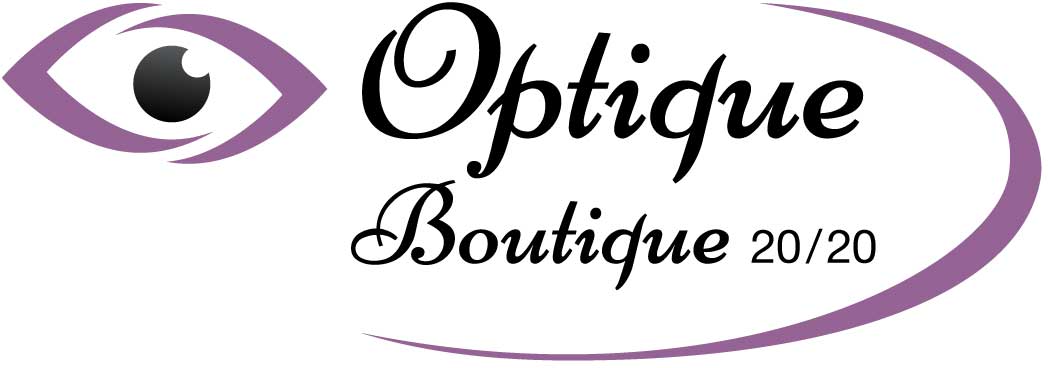A brief guide to the most common vision problems diagnosed and treated at Optique Boutique 20/20

MYOPIA
Myopia or nearsightedness is a common eye condition in which far away objects appear blurry or fuzzy, but things that are up close appear clear. It is a type of refractive error, meaning it is not an eye disease or eye health problem; it’s simply a problem with how the eye focuses light. Myopia occurs because the eyeball is slightly elongated, causing the light rays entering the cornea and lens to bend as they pass through them. As a result, the focus of the image is in front of the very back of the eye or retina. Certain health conditions, such as diabetes, raise your risk of nearsightedness, as well as a variety of genetic or environmental factors. A family history of nearsightedness can increase your chances of developing it, as does other risk factors, such as visual stress from doing detailed work, such as reading or using a computer or spending long periods of time indoors. Symptoms may include an increased frequency of headaches, squinting and eyestrain. According to the American Optometric Association, approximately 30 percent of Americans are nearsighted. Myopia can be corrected with eyeglasses, contact lenses or eye surgery. The easiest form of treatment is eyeglasses, however contact lenses or even Lasik surgery are viable treatments.
HYPEROPIA
Hyperopia or farsightedness is a common eye condition in which close objects appear blurry or fuzzy, but things seen far away at a distance appear clear. It is a type of refractive error, meaning it is not an eye disease or eye health problem; it’s simply a problem with how the eye focuses light. Hyperopia occurs because the eyeball is shorter than normal or because the cornea may be flatter than normal. The cornea and lens work together to bend, or refract, incoming light so that it is focused onto the retina. The retina, at the back of your eyeball, receives this visual information and sends it to your optic nerve, which carries that information to your brain. Hyperopia causes the light rays entering the cornea and lens to bend in such a way that the image is focused behind the retina. You’re more likely to be farsighted if your parents are. Symptoms may include increased frequency of headaches, squinting and eyestrain. According to the National Eye Institute, approximately 5-10% of Americans are farsighted. In children, strabismus or crossed eyes can develop when significant farsightedness hasn’t been diagnosed and corrected. Hyperopia can be corrected with eyeglasses or contact lenses.
ASTIGMATISM
Astigmatism is a common vision condition that causes blurry, fuzzy or distorted vision, because the lens or cornea is misshapen or has an irregular curve, which causes the light rays passing through them to focus at two different points in the back of the eye. Astigmatism causes you to see blurry at distance and near. It is a type of refractive error, meaning it is not an eye disease or eye health problem; it’s simply a problem with how the eye focuses light. Astigmatism can be easily corrected with eyeglasses, but may also be corrected with toric or astigmatic contact lenses. Symptoms include increased frequency of headaches especially after reading or prolonged visual tasks, eye strain, squinting and difficulty driving at night. Although the cause is not definite, it may include genetic factors that may be present at birth or develop later in life.
PRESBYOPIA
Presbyopia is a common eye condition associated with aging due to the eye slowly losing its ability to focus quickly when reading or viewing small objects. As our eyes naturally age, the crystalline lens starts to become harder around the age of 40, making it difficult to focus near. In its healthiest state, your lens changes shape so it can bend the light rays to focus them on your retina at the back of your eye, however the lens becomes less flexible with age and cannot change shape easily, resulting in the inability to bend the light properly so that it can properly focus on the retina. The most common symptoms of presbyopia occur around age 40 for most people. The symptoms of presbyopia typically involve a gradual deterioration in your ability to read or do work up close, blurry vision at near when reading or viewing small objects, eyestrain, squinting, brighter lighting when reading or doing close tasks and increased frequency of headaches. This is a gradual process levels off in the mid-sixties. Presbyopia can occur with other refractive conditions such as myopia and hyperopia. It is more noticeable with patients that do a great deal of close work such as computer engineers and administrative assistants. Eyeglasses can easily correct this condition with multifocal progressive eyeglasses. Multifocal contact lenses are also another option.
